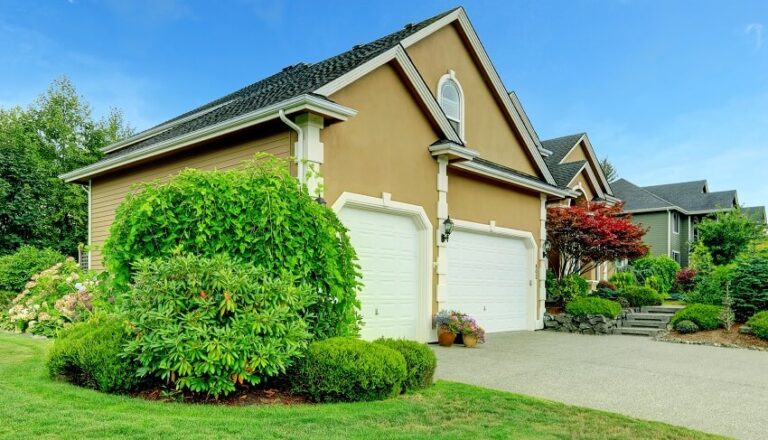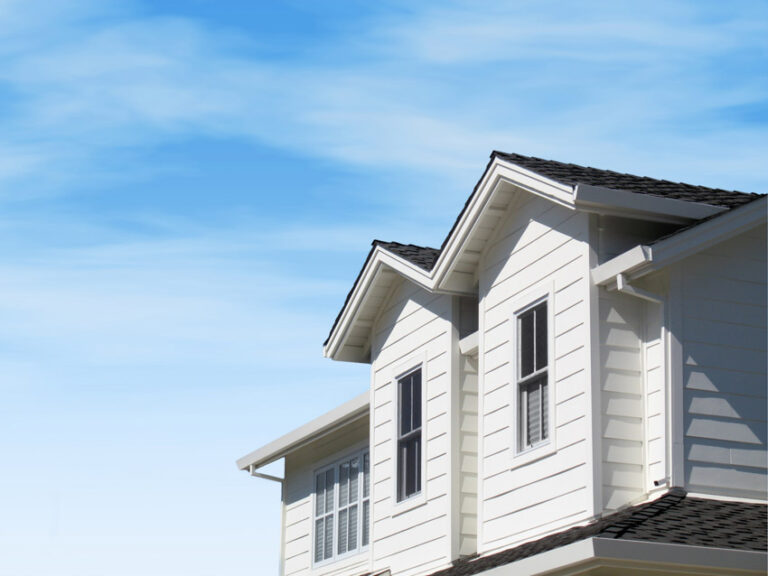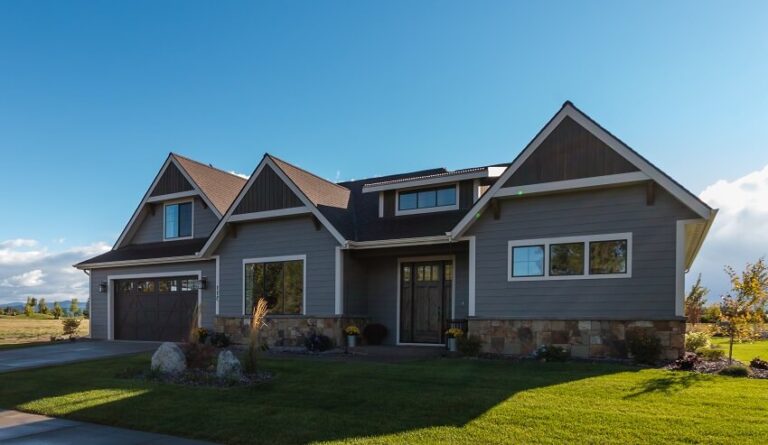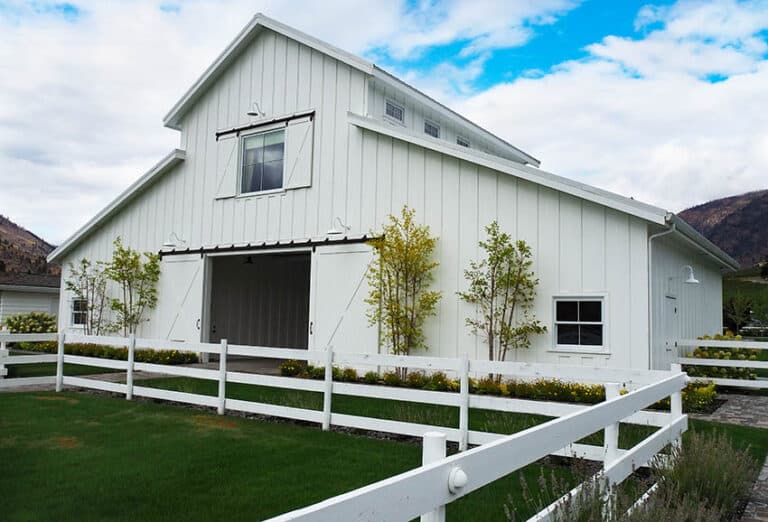What Are The Most Popular Bungalow House Paint Colors to Use?
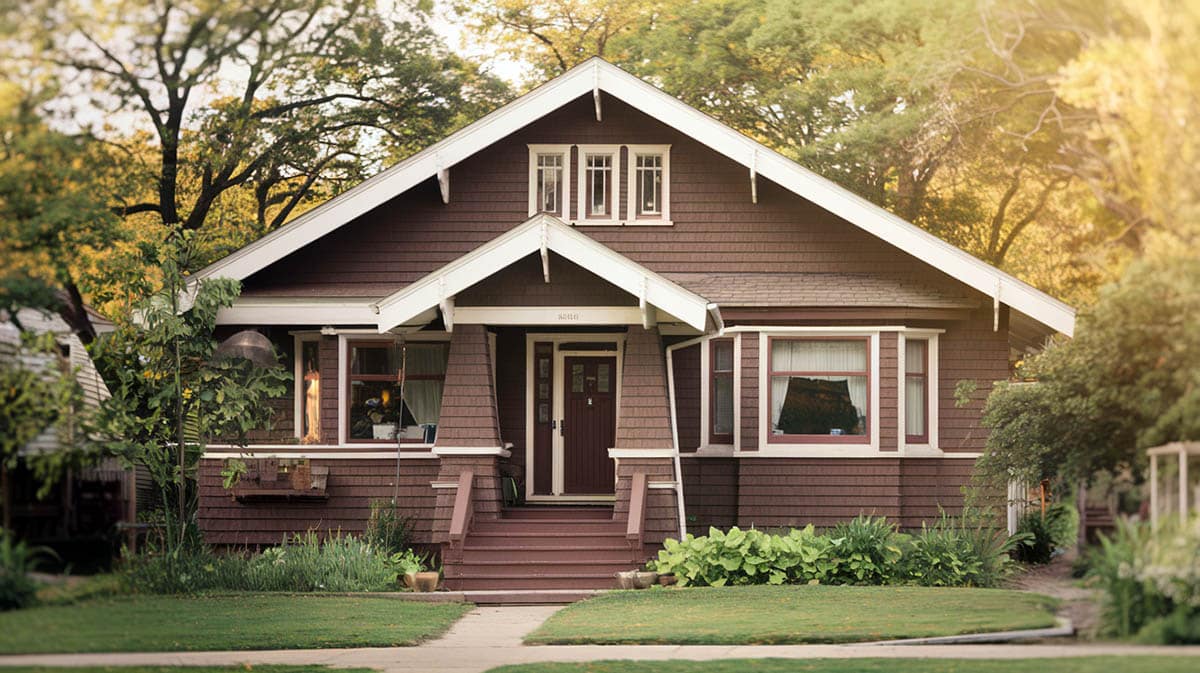
Finding the perfect paint colors for a classic bungalow home deserves thoughtful consideration. More than just personal taste, the colors you choose can honor the style’s arts and crafts heritage or give it a fresh contemporary twist. Either way, the rich history of bungalow architecture serves as inspiration. So what are the most popular bungalow house paint colors?
Warm earthy tones long dominated the arts and crafts palette, but contemporary bungalow color trends reveal smart blends of classic and current combinations. So while honoring history, today’s bungalow owners enjoy more freedom than ever to create their vision. The result: exteriors that stand out with stunning, personalized appeal.
(Images generated using AI to showcase potential design ideas.)Popular Bungalow Paint Color Combinations
When choosing you want a palette that nods to the style’s roots in the natural world without feeling too heavy or somber. I get it. This is your home we’re talking about. You want to get this right. I’ve studied hundreds of happy bungalow home owners to see what paint combinations stand the test of time.
| Paint Color | Description | Suitable Trim & Accent Colors |
|---|---|---|
| Earthy Greens | Shades like olive or sage for natural, calming ambiance. | Cream, beige, or dark brown. |
| Warm Beiges | Neutral tones for timeless & versatile appearance. | White, dark green, or burgundy. |
| Deep Blues | Rich hues such as navy or slate blue for depth & sophistication. | White, gray, or light blue. |
| Soft Yellows | Muted yellows for cheerful & welcoming feel. | White, gray, or green. |
| Terracotta Reds | Warm, clay-inspired options for rustic & earthy look. | Cream, beige, or dark brown. |
| Classic Whites | Crisp white for clean & traditional appearance. | Black, navy, or dark green. |
| Gray Tones | Light to medium gray for a modern & neutral backdrop. | White, black, or vibrant colors like red or blue. |
Classic Arts & Crafts Paint Combinations
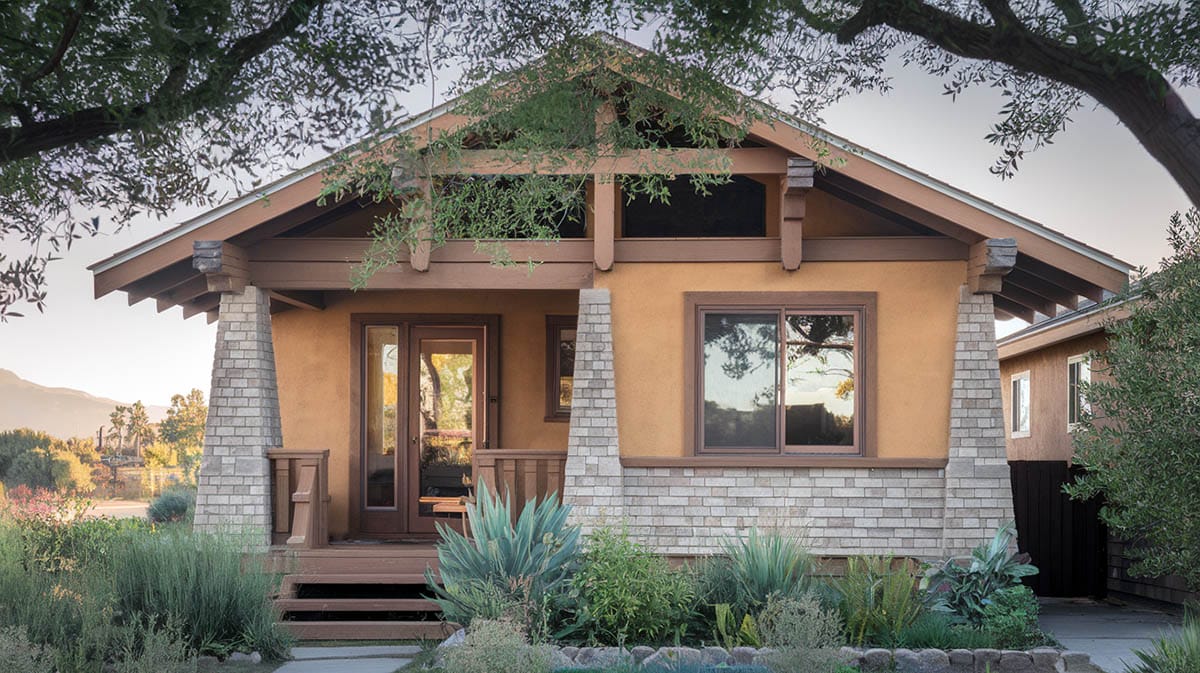
Let me suggest a few tried-and-true options for a classic exterior.
Earthen Palette
First up, the Earthen Palette. This gorgeous combo feels warm, natural, and wonderfully livable. For the main body, go with a creamy light brown like Benjamin Moore’s “Alexandria Beige.” It’s got just enough depth without going too dark. Trim windows and columns in Sherwin-Williams’ elegant “Dover White” to really make those details pop.
Now, for a little drama, paint your front door a deep hunter green. Benjamin Moore’s “Hunter Green” is rich without feeling too bold. Finally, sprinkle in touches of terra cotta on a front porch planter or shutter for a pop of that natural clay earthiness so integral to the Craftsman vibe. Sherwin-Williams “Copper Mountain” is perfection.
Forest Harmony
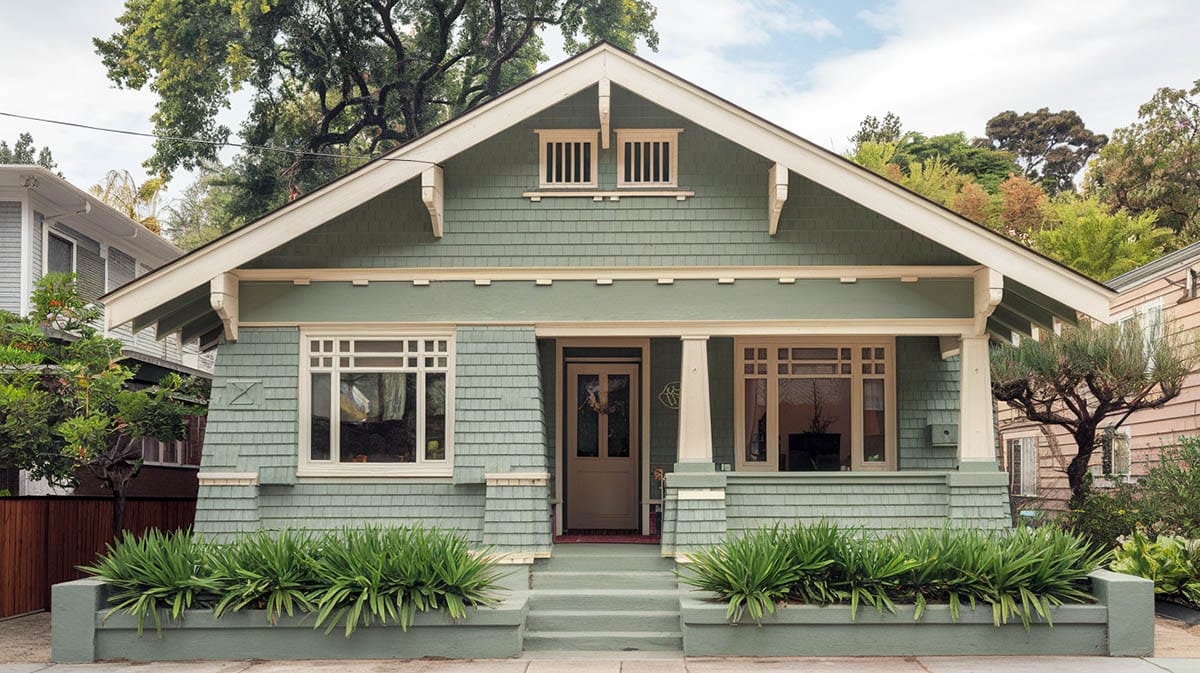
For a lush, woodsy vibe perfect for a bungalow nestled into a green setting, go for a Forest Harmony palette. Make your main exterior walls a tranquil sage green, like Sherwin-Williams’s ‘Svelte Sage.’ Trim windows and other architectural accents in a warm antique white that allows the woodwork to shine, such as Benjamin Moore’s versatile ‘Swiss Coffee.’
Then introduce hits of deep bronze on the front door or other focal points, drawing from the rich Tudor hues of ‘Tudor Brown,’ also from Benjamin Moore. Finally, bring in burgundy tones on exterior lighting, fencing or decorative tilework—try Sherwin Williams’s bold ‘Burgundy.’ The deep greens and woodsy neutrals paired with pops of bronze and wine-inspired burgundy are organic and harmonious.
Contemporary Classic Combinations
Looking to give your bungalow a fresh, modern look? I’ve got some contemporary paint color combination ideas for you.
Modern Neutral
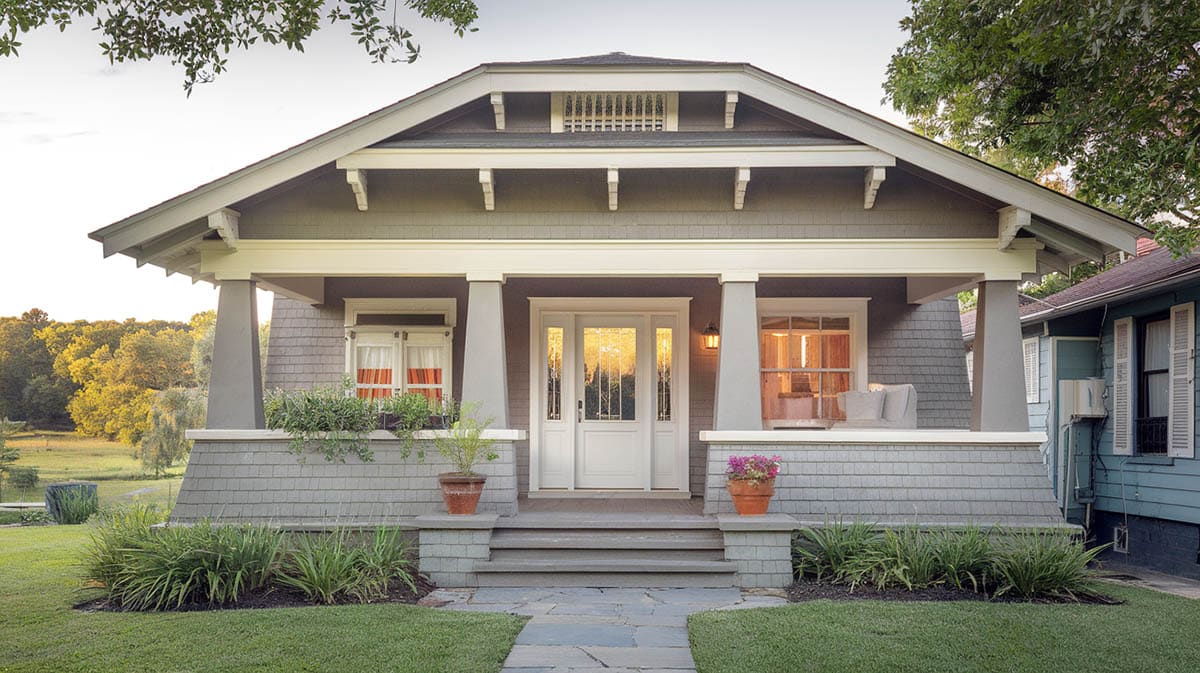
Let’s start with what I call “The Modern Neutral” scheme. For the main body of the house, go with a cozy, warm gray like Sherwin-Williams’ ever-popular “Mindful Gray.” It’s a versatile neutral that layers nicely with other colors. Trimming out the home in a bright, clean white like Benjamin Moore’s “White Dove” adds nice definition.
Now here’s the fun part – add some personality with a navy blue accent shade on the front door or other trim details. Benjamin Moore’s rich “Hale Navy” is perfect. A deep, inky black on the window sash, shudders or front door knobs and hardware grounds the whole look. I’d suggest Sherwin-Williams “Tricorn Black.”
This combo of warm and cool neutrals with crisp, classic blue and black accents gives an updated personality to traditional bungalow style. It’s especially well-suited to these homes in more urban neighborhoods.
Coastal Charm
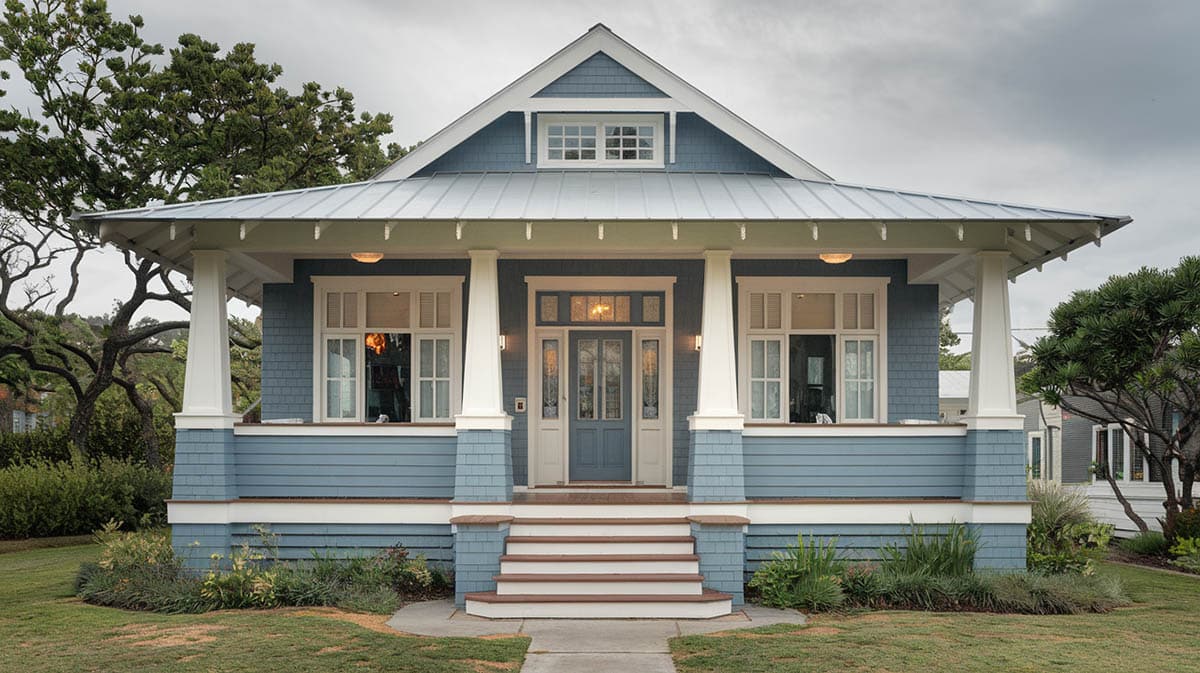
Whether it’s a breezy beachside bungalow or a classically charming Pacific Northwest craftsman, making the right color choices can help you bring your home alive. I’m loving coastal cool tones like Benjamin Moore’s “Van Deusen Blue” right now. This musty gray-blue slate provides a serene base when coupled with crisp bright white trim.
To keep things interesting, blend in some warm lighter grays on accent walls or small details – Benjamin Moore’s “Gray Owl” is a popular, cozy choice. And don’t be afraid to ground it all with rich, dark accent colors like Sherwin-Williams “Naval” navy blue on the front door or window sashes. The contrast makes both colors shine.
It’s a flexible combination that works well in coastal locales but also transports seaside vibes inland or to the mountains through color alone. And you can easily build on this core palette by layering in sand tones, dove grays, sky blues – anything soothing, really. The light, bright, relaxed feel lets your home breath easy with breezy coastal charm.
Bold Traditional Schemes
Looking to give your cherished arts-and-crafts style bungalow a fresh new look? Consider one of these hand-picked paint schemes that will have your place looking California cool or Southwest chic in no time.
Desert Sunset
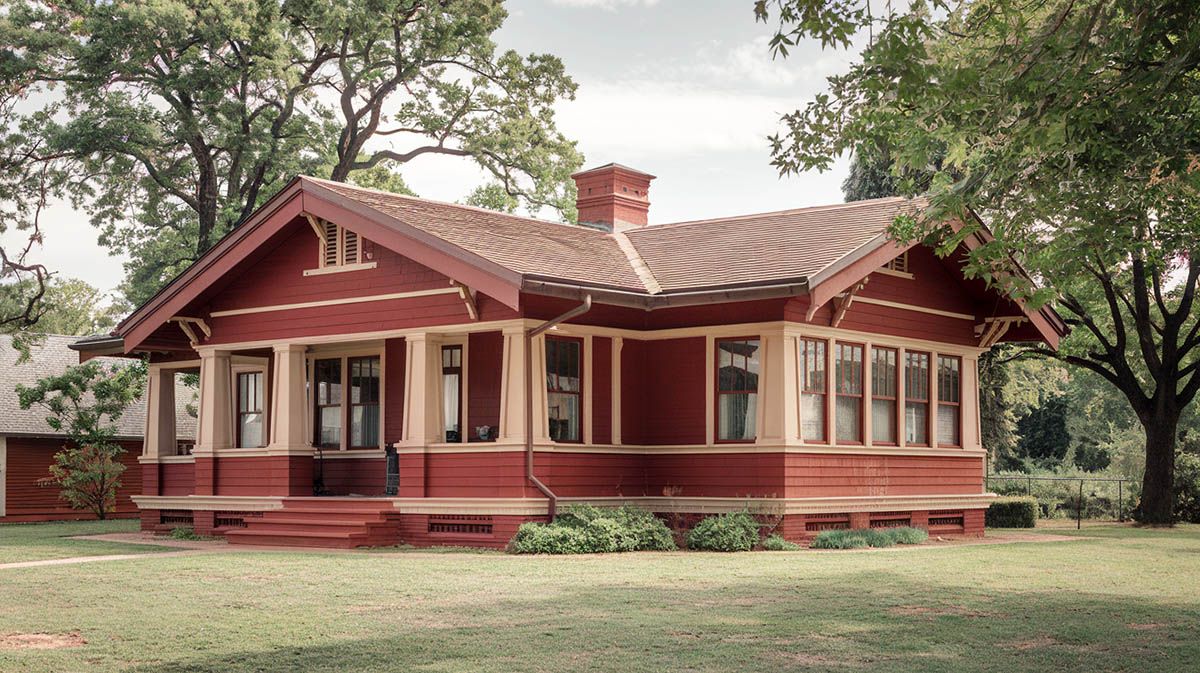
Let’s start with a bold, traditional palette I like to call “Desert Sunset.” Imagine walls glowing in a rich terra cotta hue, like Sherwin-Williams’ earthy “Rustic Red.” Trimwork and architectural details pop in a lighter sand beige tone – try Benjamin Moore’s versatile “Manchester Tan.”
Then for an unexpected punch of color, go for olive green accents, such as Sherwin-Williams’ lively “Olive Grove,” on front doors, window boxes or even statement beams inside. And finally, use a deep chocolate brown (see Benjamin Moore’s “Chocolate Truffle”) for contrasts on fascias, fences or front porch decking.
Paired together, these southwestern-inspired paint shades evoke cozy adobe homes blanketing the deserts of New Mexico and Arizona. An ideal scheme for bungalows in the western half of the country.
Forest Green
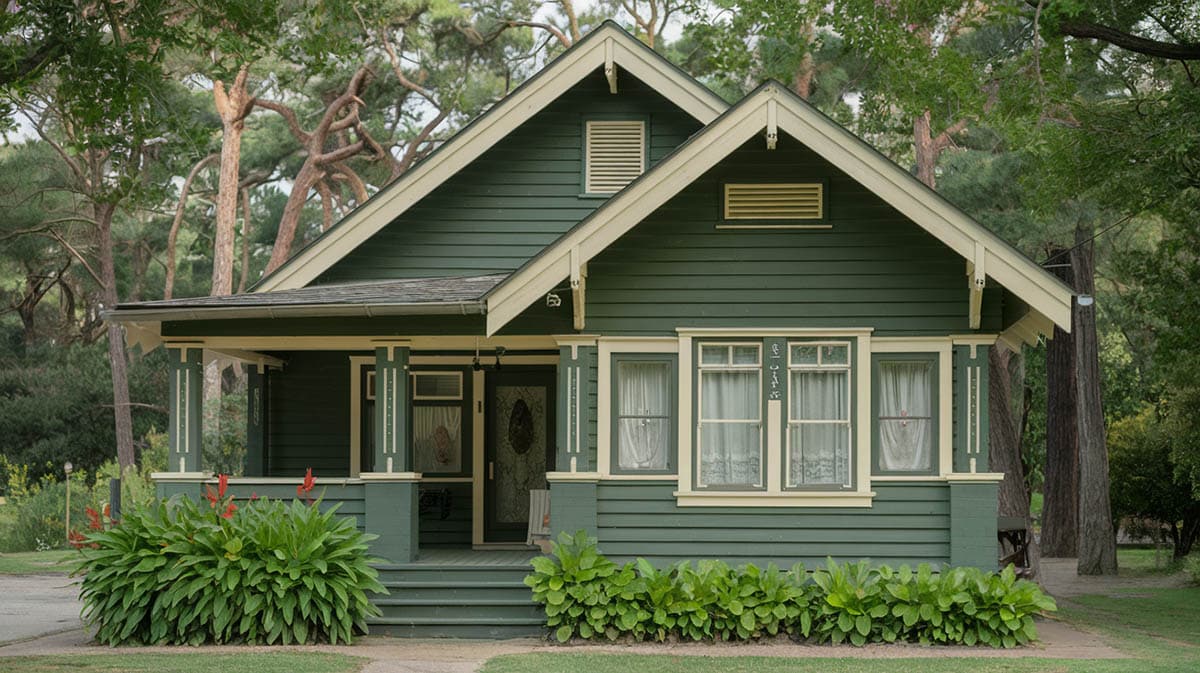
I always think deep forest greens beautifully complement the arts-and-crafts style of most bungalows. My top pick is a bold scheme using Benjamin Moore’s popular “Essex Green” – a deep, moody evergreen that plays up the organic surroundings.
Pair it with earthy cream trim, using a tone like Sherwin-Williams “Creamy” that won’t disappear against the dark green. Add pops of spice with Benjamin Moore’s “Cottage Red” on the front door or window accents. The coppery brown glaze will make details shine. Finally, use an iron black shade like Sherwin-Williams “Iron Ore” on fixtures and railings to ground the palette. This color combo is ideal if your bungalow is tucked into a wooded area or located in a historic neighborhood.
The deep green has just enough brightness, so it doesn’t feel too somber or Gothic. Meanwhile, the cream trim and red-brown accents keep things feeling crisp and nostalgic. And the black touches create the perfect bold punctuation.
Subtle Sophisticated Combinations
Looking to bring a subtle, sophisticated look to your urban bungalow? I’ve got a couple of options for you to try.
Natural Neutral
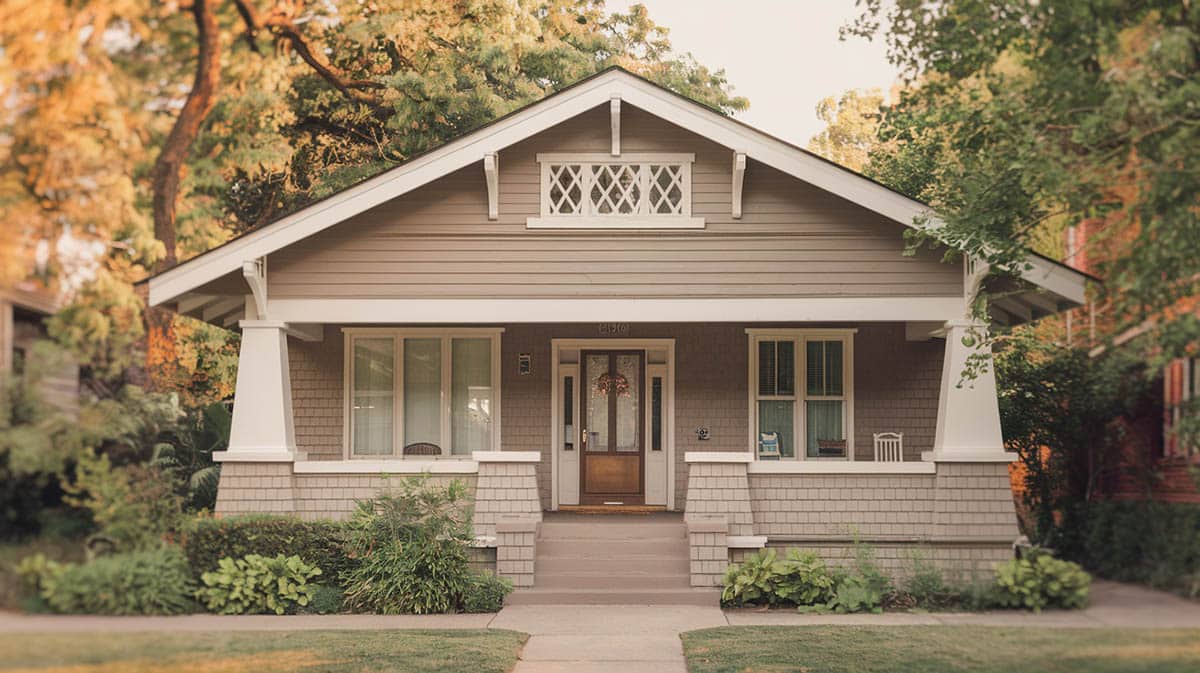
Try blending neutral taupe tones on the main body with bright white trim for contrast. Sherwin William’s popular “Tony Taupe” is the perfect warm, cozy neutral that plays well alongside crisp Benjamin Moore classics like “China White.”
To kick things up a notch, bring in some moody contrast with charcoal grey accents. Sherwin William’s deep, rich “Peppercorn” grey will make trim details pop. Warm up the look by incorporating deep bronze tones as an accent. Benjamin Moore’s “Bronze Tone” will lend a feeling of timeless elegance.
The combination of natural neutrals, bright white trim, punchy charcoal grey, and classic bronze creates a palette that is subtle yet surprisingly elegant. It’s ideal for urban bungalow owners looking to emulate a sophisticated, polished look without going overly bold or flashy.
Soft Sage
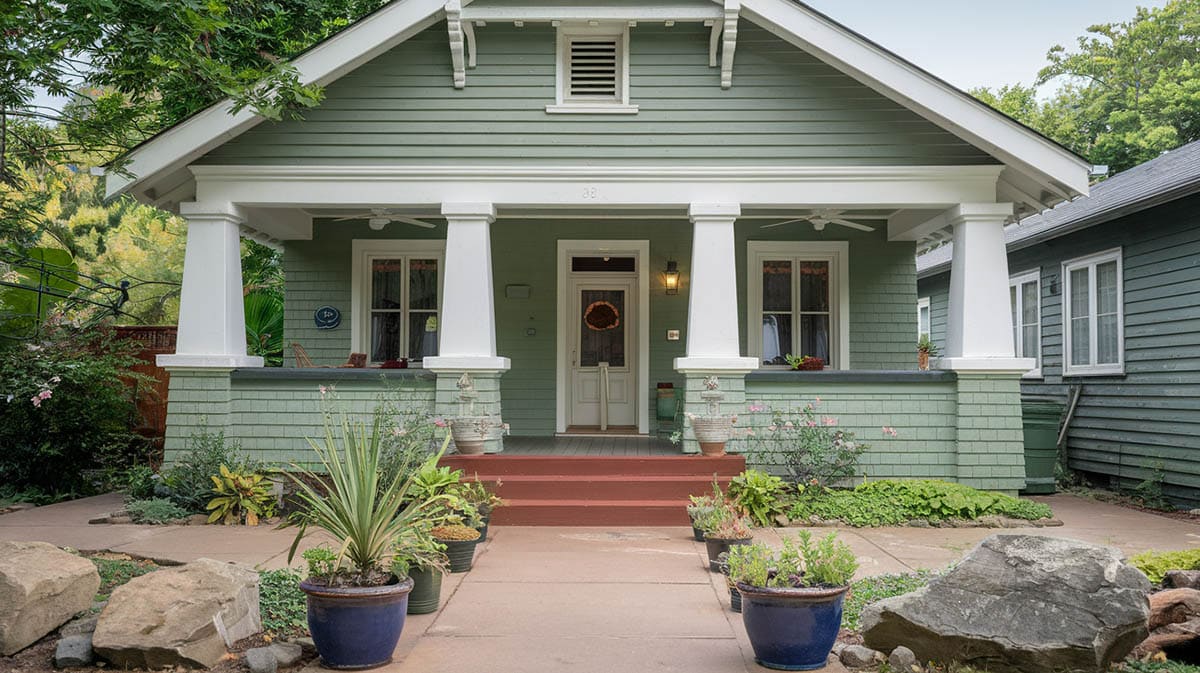
For a charming and sophisticated facelift, try a combo that is both timeless and feels fresh. I suggest a light sage green like Benjamin Moore’s “Saybrook Sage” for most of the exterior. This soft, muted green reads almost like a neutral but adds peaceful character.
For the trim, doors, and other accents, bring in warm white tones to contrast nicely against the sage, such as Sherwin-Williams’ versatile “Alabaster” white. Then comes the fun part – selecting an accent shade to wake things up. My top choice? Benjamin Moore’s gorgeous “Chelsea Gray” – a weathered pewter gray with just a kiss of blue undertones. Use this on items like the front door, window boxes, or porch decking.
Finally, splurge on black for your exterior lighting and hardware for serious curb appeal. Sherwin-Williams’ inky, intense “Iron Ore” black is fab. The deep shade against all those quiet lighter colors packs a decorative punch.
Determining Your Bungalow Sub-style Color Palettes
When picking paint colors for your darling bungalow, it’s essential to consider its specific architectural heritage. The style of your little home can serve as inspiration for selecting a palette that enhances its unique features.
American Craftsman Bungalow
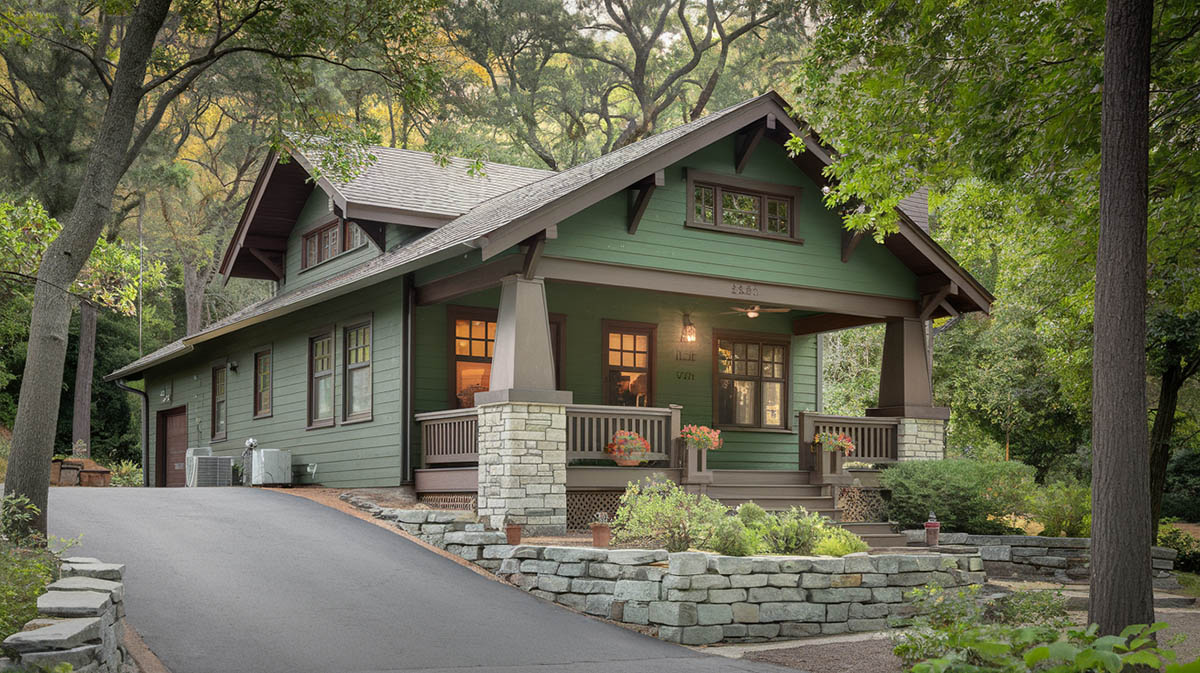
Let’s take the ever-popular American Craftsman style as an example. Known for wide front porches, exposed rafters, and multiple peaked gables, these cozy homes exude handcrafted charm. Traditionally, deep earthy hues like forest green, rusty red, and brown are used on the main exterior.
Trim pieces often feature cream, light tan, or dark brown to provide contrast. For an extra punch of personality, accents in rich terra cotta, olive, or burgundy liven things up. And a dark wood or deep green front door ties the look together wonderfully.
But if you prefer a more modern twist, bring things up-to-date with cool hues like gray, sage green or navy for the siding. Crisp bright white or antique cream trim adds nice definition. Then have fun with black, charcoal gray or bronze accents and a bold navy or forest green door for a contemporary craftsman vibe.
California Bungalow

When designing a California bungalow color scheme, you have both traditional and modern options that beautifully complement the style’s signature architectural details like the low-pitched gabled roofs and wide, graceful eaves.
The traditional color palette for these cottages uses warm, earthy hues that enhance natural materials such as river rock and clinker brick. Golden browns or warm tans work wonderfully on the main body, paired with off-white or creamy trim. Then have fun with rustic accent colors like rusty red, sage green or warm grays on the front door and window casings. A rich wood stain or deep terra cotta color on the front door grounds the whole scheme.
For a modern twist, go for lighter main body colors like light gray, wheat or soft sage green. Bright white trim pops dramatically against these muted tones. Then make the accents really stand out with saturated Mediterranean blue, olive green or charcoal gray. The front door color can pick up an accent hue, whether a deep navy blue or dark lush sage.
Chicago Bungalow
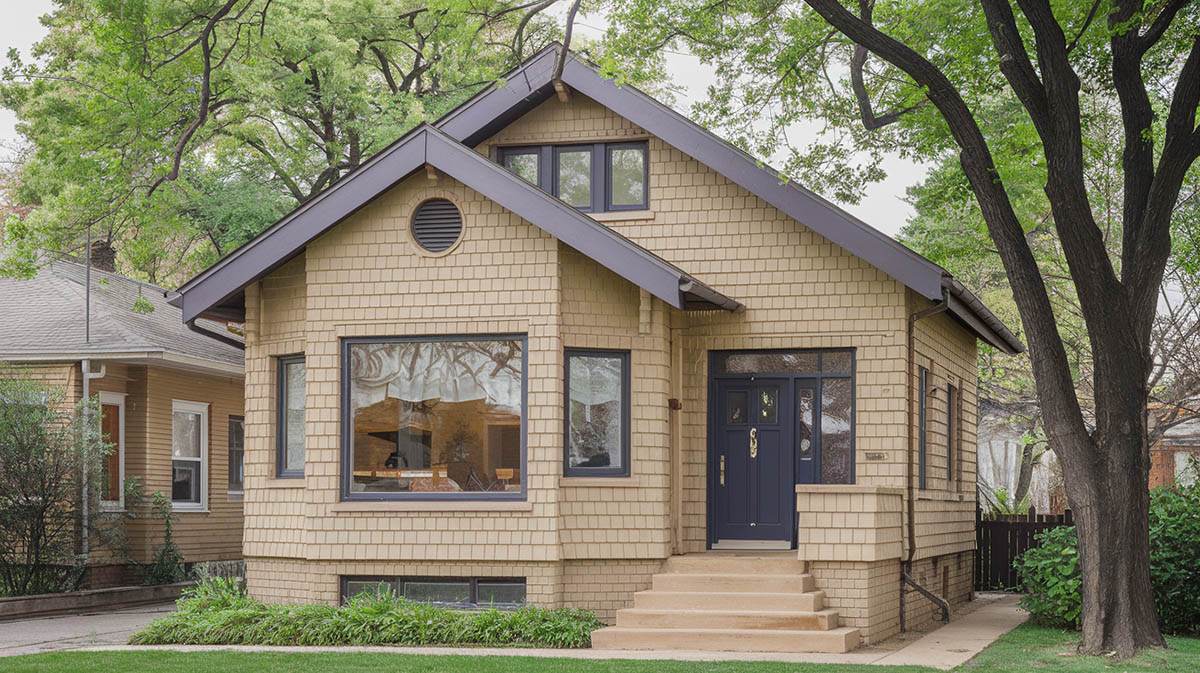
When it comes to picking out colors for a Chicago Bungalow, you’ve got options! These iconic brick homes are known for their warm red, tan, or brown brick facades accented by creamy limestone trim around the windows and doors. Traditionally, forest green, maroon, or navy were popular accent colors for the front door and other details. And you can’t go wrong with a rich dark oak or deep red front door on these homes.
But today, many homeowners are giving their Chicago Bungalows a modern, stylish update with an exterior paint job. Try a muted gray or warm taupe paint color on the brick and bright white or soft light gray paint on the trim. Then make a bold statement with the front door and accents in glossy black, deep blue, dark charcoal gray, or even sleek navy. The color pops will highlight those classic Bungalow architectural details like the oversized picture windows and limestone accents.
Prairie Style Bungalow
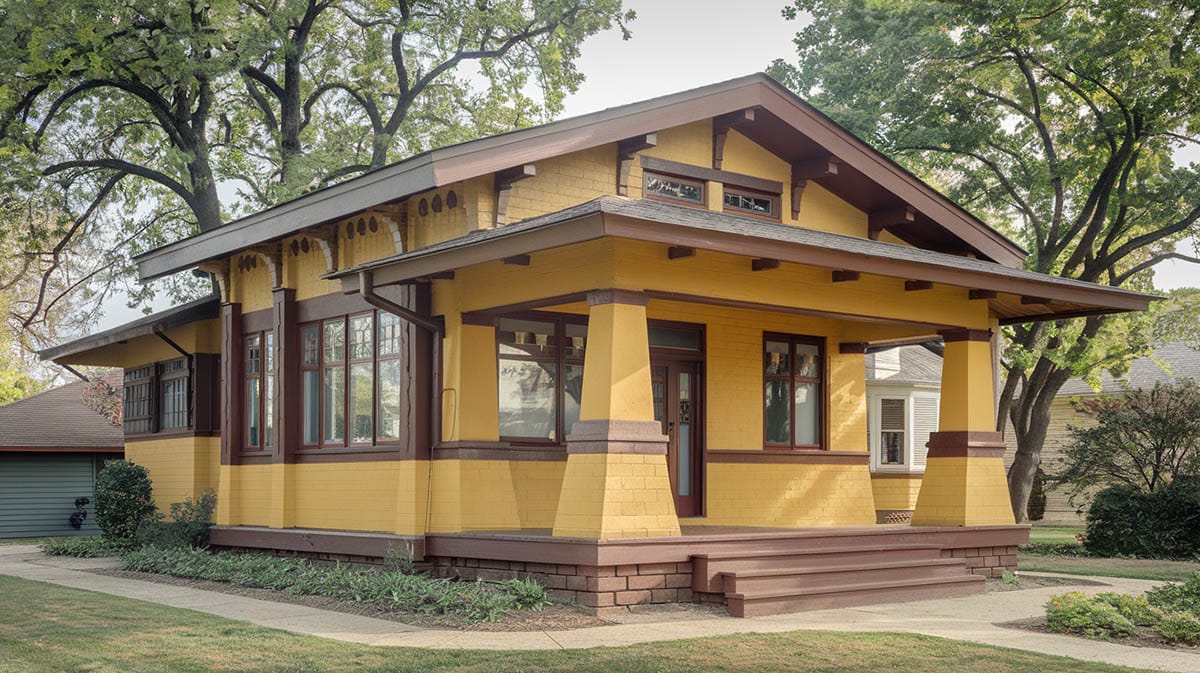
The traditional color scheme for prairie style bungalows relies on earthy hues of warm brown, deep yellow, and terra cotta accents. Think a solid tan body or buttery yellow, chocolate brown trim boards, a pop of rusty copper on the front door, window sashes, or ceramic roof tiles. Very grounded in nature’s palette.
For a modern twist, go for more sophisticated versions of the traditional tones. Try a warm greige or light bronze for the siding matched with charcoal or dark bronze accents and trim. Black detailing adds another punch of contrast, as does swapping out classic wood doors for stained black.
Tudor Revival Bungalow
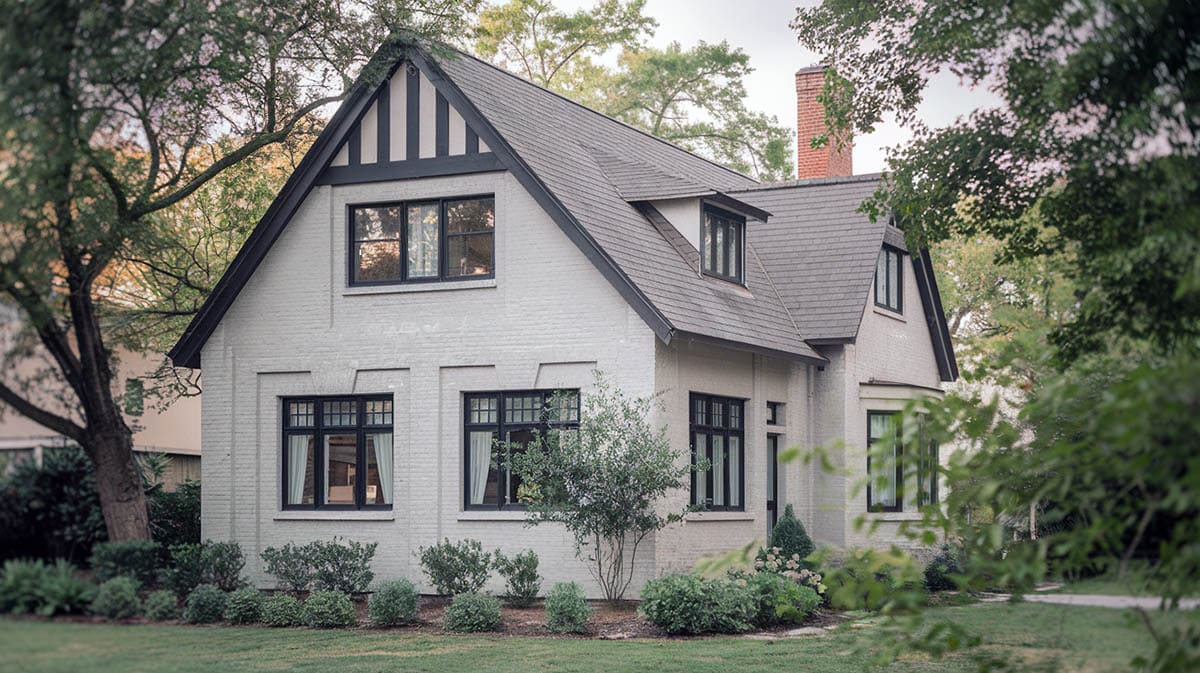
A key component of the Tudor Revival style is the Half-timbering trim technique that utilizes crisscrossed wooden beams on exterior walls. This is then coupled with steep, attention-grabbing roof pitches and decorative touches of stone or brickwork scattered throughout.
The traditional color scheme for these cottages utilizes light, neutral tones like cream or light gray stucco for the main exterior body. This allows the bolder blacks and deep browns of the faux wood timbering to really pop. Burgundy, forest green, or navy blue makes for an excellent accent shade on the front door or other trim details to tie everything together. Dark wood stained or deep red entry doors also coordinate well with the black trim and add a nice punch of color.
For a more modern twist, try a soft white, warm gray, or on-trend greige hue for your bungalow’s siding. Contrast this with matte black or charcoal timber beams and opt for accents in deep purple, navy or emerald shades. Paint your front door black or very dark gray to complete the contemporary vibe.
Spanish Colonial Bungalow
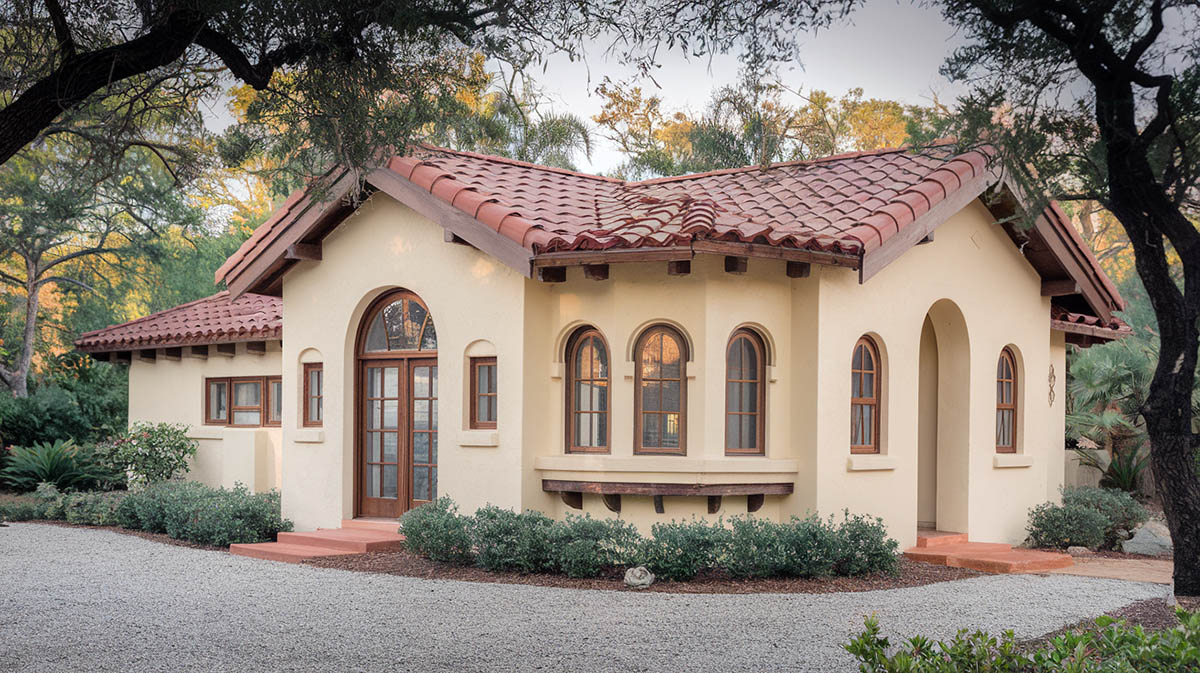
With Spanish Colonial style bungalows, you can’t go wrong embracing the classic white or cream colored stucco exterior walls contrasted by richly toned wood trim and dramatic pops of color on the doors and accents. Traditional interpretations often utilize dark brown wood trims with deep red roof tiles and vibrant turquoise or rust orange accents.
For a more modern twist, try pairing bright clean white stucco with black trim and warm bronze hardware. Sage green and Mediterranean blue make for appealing modern accents to liven things up. And don’t forget the doors! A charming wood tone can impart that Old World character, while sleek black makes a sophisticated statement. Play around with different color combinations to find your own signature Spanish Colonial style that feels fresh yet authentic. The possibilities are wide open within this iconic aesthetic.
Color Selection Tips by Sub-style Materials
Brick – If your bungalow is graced with charming brickwork, you have a lovely neutral backdrop to build upon. Consider whitewashing or painting the brick if you want to change up the look. Just make sure to test colors on a small, inconspicuous area first. For trim and accents, go bold with deeper hues that contrast beautifully with the brick, like navy, forest green or even black. And don’t forget the front door! Paint it a vibrant shade like red, yellow or teal to make it really pop.
Stucco – Stucco bungalows have endless potential thanks to the modeling capabilities of the textured finish. But keep in mind that stucco can look drastically different depending on sunlight and weather conditions. Be sure to view color samples at various times of day before finalizing your palette. Multiple layers of color washing in complementary hues adds subtle visual depth and interest to stucco facades. If your stucco bungalow has a clay tile roof, consider echoing some of those warm, earthy tones in the exterior walls.
Wood Siding – Lastly, don’t hide that gorgeous wood siding under too much color! Woods like cedar and redwood have such variation and natural beauty. Consider a semi-transparent stain that enhances without overpowering the grain. Or heighten the architecture itself by choosing body and trim colors with high contrast, like a deep green with bright white detailing. Use touches of color on windows and doors to accentuate charming details like paned glass or carved woodwork.
Traditional Bungalow Color Schemes
Emerging in the late 1800s, bungalows gained fame through the early 1900s as hallmarks of the arts and crafts movement. Known for low-pitched roofs, wide welcoming eaves and handcrafted charm, these homes blended naturally with their surroundings while celebrating expert artisanship. When maintaining a bungalow’s architectural integrity, historically appropriate colors prove crucial. Though not bound by strict rules, homeowners often choose warm, dynamic schemes that nod to tradition or update it with modern flair. When it comes to picking exterior colors for a traditional Arts and Crafts-style bungalow, you really can’t go wrong embracing some warm, earthy hues.
Earth Tones
The Arts and Crafts movement was all about celebrating natural materials and colors, so rich browns, terra cotta, and golden yellows pay homage to the classic bungalow aesthetic. Think chocolate browns that reflect the rich wood details, or lighter tans reminiscent of welcoming porches bathed in dawn’s glow. Terra cotta shades are a nod to the clay tiles adorning many early bungalows. Golden yellows add a touch of brightness while maintaining that organic vibe.
Historic Greens
And we can’t forget about green – no bungalow color scheme is complete without some nature-inspired green tones. Popular sage green evokes peaceful landscapes and offers a refined, pleasant look. Feeling dramatic? Deeper olive green set against wood siding can create quite the striking statement. For homes nestled in wooded surrounds, a bold forest green ties the architecture beautifully to the natural environment.
Modern Spin On Classic Colors
When it comes to choosing exterior colors for a classic bungalow, today’s homeowners often want to strike a balance between honoring the traditional charm while also feeling fresh and updated. Warm, cozy grays have become an increasingly popular alternative to standard browns, offering a more sophisticated neutral backdrop that works with a variety of architectural details.
For those seeking a clean, bright white that still fits with historic appropriateness, soft whites are a great choice, lending brightness without going too stark or clinical. And variable beige tones add subtle depth and visual interest when a solid neutral isn’t quite enough.
Beyond neutral backdrops, blue hues have gained some prominence in modern bungalow color combinations. A rich navy blue offers a bold, almost nautical vibe that looks particularly fitting near water. For those seeking something softer, a slate blue finds a sweet spot between upholding tradition while also feeling contemporary. And a classic colonial blue, reminiscent of the American colonial style, complements traditional trim beautifully while still maintaining a timelessness.
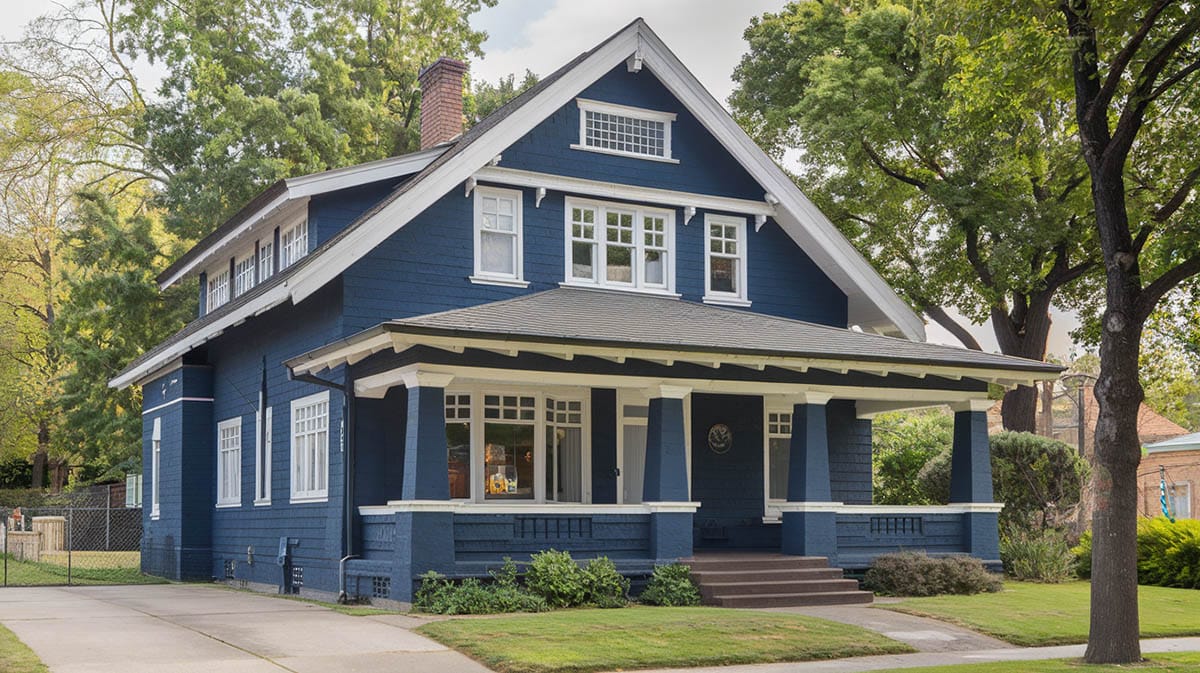
Tips For Choosing A Color For A Bungalow
When choosing exterior paint colors for your charming bungalow home, strategic color placement can make all the difference in highlighting your home’s best features. The key is selecting a versatile main color for the siding or stucco surfaces, complemented by judiciously chosen accent colors on the trim, doors, shutters, and other decorative details.
Regional factors like climate, sun exposure, and proximity to the ocean deserve thoughtful consideration. Up north, warm cinnamon and terracotta tones offset gray skies, while coastal locales beg for durable hues that won’t fade in the glaring sunlight. Down south, lighter shades help reflect intense heat.
Architectural elements provide cues for color too. For simple home designs, subtle, graduating color transitions using light neutrals on siding paired with a slightly deeper shade on the trim can provide pleasing cohesion. More elaborate Victorian-style millwork framing the windows and doors invite an interplay of contrasting colors to make those lovely details pop.
When tackling your bungalow’s unique palette, designate a dominant main color for larger areas like siding or stucco walls, in a versatile neutral or deep rich tone. Use a lighter, complementary hue on the home’s trim details – window/door frames, corner boards, fascia.
Then have fun with a vibrant accent color on the front door, shutters, or other special ornamental touches. Strategic punches of color in small doses enliven the curb appeal. Finally, consider a custom detail shade for finicky decorative elements like brackets, spindles, or window grids that may require extra durability.
If you’re still unsure f what ideas to use, something to try is to browse other bungalow homes in your town to look for paint combinations you enjoy. Write down the pairing you find cohesive and match with your own personal style.
Testing Your Home Exterior Color
Small paint samples never tell the whole story of how a color will look, covering large surfaces under shifting light. Before committing to a palette, do your due diligence to avoid an expensive mistake.
Start by painting decent-sized test swatches of potential colors on a few different sides of your home. Observe these swatches at various times of day as the sun moves and changes the light quality. Stand back and study the colors under bright midday light, warm afternoon light, and cool early evening light. Also keep an eye on the swatches during different weather conditions – overcast days versus clear skies. A color can transform quite a bit from sunny to cloudy.
Additionally, use software visualization tools to overlay colors onto photos of your home. Many paint company websites have this capability. Switch up color combinations to compare what works. This gives you a good preview before lifting a brush.
By thoroughly testing colors under realistic conditions first, you’ll feel confident in your final selection knowing how the shades will actually look covering your entire bungalow. The extra diligence upfront prevents a paint job you later regret. Soon you’ll have exterior colors you still love when that first excited glow wears off.
When choosing exterior colors for your bungalow, it helps to consider tried-and-true color combinations that tend to work well with these charming homes. Just remember that no strict color rules apply – the best shades for your home depend on its architecture, surroundings, and your own taste.



